Thanks to a 70% drop in price since 20101 and plenty of government subsidies, solar panels have become an integral part of the utility grid, as well as many home rooftops. However, this renewable energy technology isn’t all sunshine. There’s shadows looming over its bright future. There’s a potential tsunami of panels that will be nearing their end-of-life in the coming years. That fact has concerned many people, as the vast majority of panels here in the U.S. aren’t recycled. Why is that and what happens to these panels at the end of their service life? Is it even possible to recycle them? There’s some interesting advances there that we have to talk about. Let’s see if we can come to a decision on this.
Solar panel recycling has been a topic I’ve wanted to talk about for a while, but just haven’t gotten around to it. You can see more about my solar panel experience here. Not too long ago, the LA Times published an article that painted a pretty grim picture and a bunch of you started asking me about it. So, can we recycle solar panels and is the problem really that bad? Yes, we can recycle them … but it’s complicated. And as a big proponent of solar energy, I can’t ignore that this is a big, looming issue.
Unlike solar energy, solar panels aren’t a never ending resource and most panels will hit their end-of-life in 30 to 40 years.2 Many people talk about 20-25 years, but often they’re talking about the panel warranty period. They can last much longer than that, but when they do hit end-of-life, what happens to them at that point? The answer is kind of complicated, as photovoltaic (PV) panels are multi-layered sandwiches made from different materials. According to the Solar for Energy Industries Association (SEIA), easy-to-recycle materials like the glass pane and aluminum frame make up 80% of a typical PV module.3 How about the remaining 20%? This changes depending upon the type of panel. Let’s take silicon-based PV modules, which represent 90% of the global market.4 In this case, you have a silicon cell with a silver grid on top. Also, there’s an ethylene vinyl acetate (EVA) layer sandwiching the cell. Finally, at the back of the panel, you have a plastic junction box with copper wiring inside.5 While all of these materials are potentially recyclable, separating them out is a labor-intensive and complex process. In the best case scenario, solar panels end up in glass recycling facilities, where they mechanically pop off the aluminum frame and the plastic junction box, and they strip off the copper wiring. Then, recyclers shred the glass pane without isolating the sandwiched components and sell a not-so-shiny glassy powder, a.k.a. cullet, which can be used as building material or for other industrial applications.
In the worst case scenario, solar panels are shredded as received. However, this isn’t worth the effort for recyclers. A paper6 estimated that you can barely make $3 from the recovered glass, aluminum, and copper of a 60-cell silicon module. That amount is dwarfed by the expenses, as the cost of recycling a panel in the U.S. can cost up to $25.7 In contrast, sending a module to a landfill costs just $28. So, you may see why only about 10% of US panels get recycled.9 Things could change if we could recover silicon and silver, accounting for 60%9 of the module’s value. To do this, you would need high-temperature thermal and chemical treatments on top of the mechanical steps, which translates into higher costs.
Recovering silicon may not even be enough to offset the cost. That’s what researchers found out when assessing the feasibility of a 2,000-ton recycling plant.10 According to scientists, the process wouldn’t be profitable as, unlike thin-film modules, silicon-based panels lack valuable metals like indium and gallium. Besides their low intrinsic economic value, solar panels are fragile and could be classified as hazardous waste when they fail a heavy metals leach test.11 This means you need a specialized workforce, treatment, packaging, and transport to handle them safely. Not to mention the potential environmental impact of contaminating the soil and groundwater with nasty chemicals like lead and cadmium when being chucked into a landfill. As reported by the LA Times, panels go through a treatment, such as glass laminate encapsulation (GLE). This process seals the panel and minimizes heavy metals leaching out.12 Researchers simulated and ran multiple tests on the effect of GLE on lead leaching potential.13 How well does it work? In one case, GLE reduced the lead mobility by up to 9 times, making it nearly harmless for the environment. However, one of the tests revealed that GLE was not enough to limit lead spreading. Factoring in solar panel disposal and panels getting early retirement for newer more efficient panels, the Harvard Business Review predicted that the levelized cost of energy (LCOE) of solar panels could quadruple by 2035.14 I think that’s a little aggressive, but we’re in uncharted territory here. The absence of a nation-wide law mandating recycling doesn’t help either. In fact, only 5 states have put in place solar panels end-of-life policies so far.15 With a solar trash wave looming, we’d better find a way to recycle more … and we need to be quick to stay ahead of it. According to the International Renewable Energy Agency (IEA), by 2050 we could have nearly 80 million metric tons worth of solar panel waste.16 That sounds like a pile of solar garbage that could eclipse the sun. That sounds like something Mr. Burns could get behind.
Lead-ing by example
Clearly, the sun isn’t shining on solar panel recycling…yet … but we shouldn’t get stuck in doom and gloom here. We’ve already managed to sort out similar problems in the past and we can learn from that. Let’s look at the lead acid batteries (LAB) success story, for instance. A study from the Battery Council International (BCI) reported a LAB recycling rate of 99% between 2014 and 2018 here in the US.17 LABs are the most recycled American product today, but how long did it take us to get there? According to the Environmental Protection Agency (EPA), we recycled around 70% of LABs on average in 1985.18 Back then, lead price was so low that recycling LABs wasn’t economically attractive. It’s not that different from what we’re seeing today. Yet, pushed by strategic legislation, it began to ramp up.
The Resource Conservation and Recovery Act (RCRA) was one of the most important nation-wide regulatory drivers. Signed off by the US government in 197619, this law identified some “metals of concern”, including lead.20 However, it took us another 15 years or so to really see the impact. In the early 1990s, several states finally banned LABs from landfills. On top of that, local authorities implemented some policies to build their recycling supply chains.21 First, they required retailers to accept used LABs from consumers, who were charged a deposit for each new battery bought without returning an old one. Also, a take back program forced manufacturers to purchase recycled LABs from retailers. The benefit of this was that recycling LABs remained profitable even when the lead price plummeted. And these policies worked. One year after introducing them, Rhode Island increased its LAB recycling rate by up to 40%, reaching a whopping 95% rate in 1990. While that was a localized exception at that time, BCI estimated that we reached a 99% recycling rate on a national scale in 2011.22
A relatively simple chemistry and a well-established technology such as pyrometallurgical smelting supercharged LABs recycling rate over the years.23 On the other hand, LABs conventional recycling process is neither eco-friendly or safe, as it consumes a lot of energy and releases lead and greenhouse gasses (GHG) into the atmosphere,24 which is why researchers have been focusing on the development of a greener method over the last decade.25 On that note, something interesting has already come out of the lab. Instead of relying on the traditional smelting at over 1,000 °C, ACE Green Recycling has designed an electricity-powered LABs recycling process.26 They’re going to start building their first plant in Texas very soon,27 which is scheduled to go live by the end of 2023. It’s expected to recycle over 5 million LABs and avoid 50,000 metric tons of GHG emissions once they reach full capacity. Funny enough, the startup is looking into using solar panels to power their whole facility…I wonder if they’ll recycle their expertise to promote PV module recovery too.
Some rays of sunshine
The LABs example highlights how far-sighted policies can catalyze recycling efforts. Clearly, from the technological point of view, the solar panels case is a bit more complex. However, researchers, companies, and regulators are working to improve the cost-to-revenue ratio. As I mentioned earlier, one of the main economic challenges is to recover the higher-value materials like silicon and silver. The current method to etch pure silicon out of solar cells means using hydrofluoric acid, which is highly toxic and corrosive. Last November, Indian researchers came up with a safer and more cost-effective recipe, including sodium hydroxide, nitric acid and phosphoric acid as ingredients.28 Adopting a 3-step sequential procedure, scientists not only extracted 99.998% pure silicon but also recovered silver. As a result, they estimated that integrating their technique into the recycling process of a 1-kg solar cell would yield a profit of around $185.
Just a month later, a team including Arizona State University (ASU) researchers, the TG companies startup, and the energy firm First Solar received a $485,000 grant from the Department of Energy (DOE) for developing a process that recovers high-pure silicon and silver from PV cells.29 So, what’s their silver lining? First, TG companies claim30 to have designed a heat treatment to boil off the EVA protective layer without damaging or contaminating the solar cell. Unlike conventional furnaces, their oven will operate at a temperature lower than 500°C, which prevents iron and copper from leaching into the solar cell. At that point it gets a little fuzzy because they use their patent-pending secret sauce to isolate silicon and silver. Their CEO said they’ll rely on less harsh chemicals that can be regenerated indefinitely. Having said that, as flagged by an industry expert, the startup may likely face material losses when separating silicon cells from their polymeric coating.29 It’s just a matter of waiting at least a couple of years to fact check their progress. That’s when the startup is aiming to have their first pilot plant up and running, with a recycling target of 100,000 solar panels per year.
Aside from research and private sector efforts, legislators need to do their part to power solar recycling, just like they did with lead acid batteries. Europe has been a pioneer in this, labeling solar panels as e-waste since 2014.31 The Waste of Electrical and Electronic Equipment directive … known as WEEE … first defined the ‘extended producer responsibility’ concept.32 In short, the regulation compels solar panel manufacturers to fund their own products recycling at the end of life. It also requires recycling 80% of the materials used in PV panels.32 This policy led to opportunities for the EU recycling market. For instance, PV Cycle developed a recycling program to help manufacturers fulfill WEEE obligations. In February 2020, the EU-funded company recycled nearly 95% of solar module content in France, which is well above what’s required by WEEE.33 They achieved this exceptional result by partnering with Veolia, who launched Europe’s first solar panels recycling plant in 2018.34 Leveraging robots, Veolia dismantles the solar sandwiches layer by layer and recovers silicon, silver, and other components.
It’s a completely different story here in the U.S. We’re light years behind. In America, the only35 law holding producers accountable for solar panel recycling won’t go live until 2025,36 which means consumers are still paying the price for it. Although they aren’t shifting recycling costs and responsibilities from user to producer, California has switched their solar panel waste label from hazardous to universal hazardous in 2021.37 Falling in this new category, PV modules collection, transport, and storage are subject to less stringent requirements.38 For instance, recyclers won’t have to perform any leaching tests, which is costly and time-consuming39. According to the Department of Toxic Substances Control (DTSC), their regulation will trigger the recycling of at least 15% of the PV modules currently in use.40 However, some of the policy’s critics highlighted a couple of drawbacks.38 First, the requirements for recycling PV modules are essentially the same as those for their disposal in a landfill. And that’s a big problem since the landfill is currently much cheaper. In addition, California’s regulation doesn’t allow recyclers to apply the thermal and chemical methods commonly used today. While binding rules are lacking, in 2016 the SEIA introduced a voluntary recycling program similar to that run by PC Cycle in Europe.41 As of 2020, a few manufacturers, including First Solar, had joined their initiative and helped them recycle over 4M pounds worth of PV modules and related equipment.
Although recycling solar panels is currently an expensive process, it could pay off in the long run. In a recent report, Rystad Energy estimated that the value of recycling solar panels materials could reach $2.7 billion in 2030. Multiply that 30x to get their 2050 overall market potential.42 The main drivers of this crazy growth would be rising energy costs, technological advancements, and regulatory push. Speaking of rules, researchers from the National Renewable Laboratory (NREL) published a paper last year advising policymakers on how to create a financially viable solar panel industry.43 Their main suggestion was to subsidize the cost of recycling. To be more specific, with a $18 incentive, we could profitably recycle 20% of our PV modules by 2032. And this could get even better as recycling technology becomes more efficient. In particular, recovering 94% of the silver and 97% of the silicon contained in the PV modules would be a significant profitability booster.
Giving a second life to all solar panel components would not only reduce the amount of waste ending up in landfills but also shrink the demand for new materials. Besides boosting recycling profitability, regulations should make landfilling less convenient. While being in its early days, new recycling technology could improve the recovery of PV modules’ precious materials such as silicon and silver. Although optimizing solar panels recycling may take us longer compared to LABs, it’s just a matter of time. We’re actually seeing this type of recycling improvement happen in the lithium ion battery market right now … but that’s a different video. What’s exciting is that, once the kinks are worked out, this could lead to huge market opportunities. It could be a win for the economy and the environment if we play our cards right.
- “Solar Industry Research Data | SEIA.” ↩
- “How Long Do Solar Panels Last?.” ↩
- “End-of-Life Management for Solar Photovoltaics: Recycling.” ↩
- “Technology Roadmap – Solar Photovoltaic Energy – NET.” ↩
- “Solar Panel Recycling | US EPA.” ↩
- “Major challenges and opportunities in silicon solar module recycling.” ↩
- “Solar panels are starting to die. What will we do with the megatons ….” ↩
- “Recycling solar panels: A new challenge for going green.” ↩
- “Solar panels are a pain to recycle. These companies are trying to fix ….” ↩ ↩
- “Economic Feasibility for Recycling of Waste Crystalline Silicon ….” ↩
- “Solar Panel Frequent Questions | US EPA.” ↩
- “California went big on rooftop solar. Now that’s a problem for landfills.” ↩
- “Evaluation of heavy metal leaching under simulated disposal ….” ↩
- “The Dark Side of Solar Power – Harvard Business Review.” ↩
- “End-of-Life Solar Panels: Regulations and Management | US EPA.” ↩
- “End-of-life management: Solar Photovoltaic Panels – IRENA.” ↩
- “National Recycling Rate Study – Essential Energy Everyday.” ↩
- “The EPA National Library Catalog | US EPA.” ↩
- “History of the Resource Conservation and Recovery Act (RCRA).” ↩
- “Carl Smith: The Evolving Battery Recycling Journey.” ↩
- “Document Display | NEPIS | US EPA.” ↩
- “Comparison of the US Lead Recycling Industry in 1998 and 2011.” ↩
- “Recycling Lead-Acid Batteries Is Easy. Why Is Recycling Lithium-ion ….” ↩
- “Hydrometallurgical recovery of lead from spent lead-acid battery ….” ↩
- “Lead Acid Battery Recycling – an overview | ScienceDirect Topics.” ↩
- “Ace Green Recycling.” ↩
- “ACE Green Recycling to build North America’s largest green battery ….” ↩
- “Recovery of Pure Silicon and Other Materials from Disposed Solar ….” ↩
- “Solar recycling is broken, but there’s a plan to fix it – The Verge.” ↩ ↩
- “Solar Cell Extraction System – EVA Burning System – TG Companies.” ↩
- “Solar panels now caught by WEEE regulatory regime – Briefing.” ↩
- “EU regulation pushing forward PV recycling: the WEEE directive.” ↩ ↩
- “Recycling PV panels: Why can’t we hit 100%?.” ↩
- “Europe’s first solar panel recycling plant opens in France – Reuters.” ↩
- “Solar panel recycling: A circular economy for renewable energy.” ↩
- “Solar panels – Washington State Department of Ecology – WA.gov.” ↩
- “Calif.’s Complicated Transition On Solar Panel Disposal.” ↩
- “Environmental and Circular Economy Implications of Solar Energy in ….” ↩ ↩
- “New California regulation could jump-start solar panel recycling sector.” ↩
- “Calif.’s Complicated Transition On Solar Panel Disposal.” ↩
- “End-of-Life Management for Solar Photovoltaics: Recycling.” ↩
- “Solar PV recycling market to be worth $2.7 billion by 2030.” ↩
- “Role of the social factors in success of solar photovoltaic reuse and ….” ↩



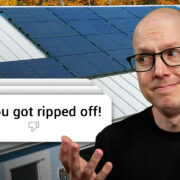



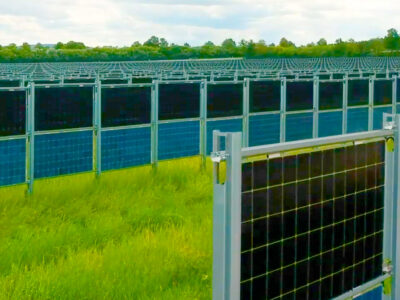


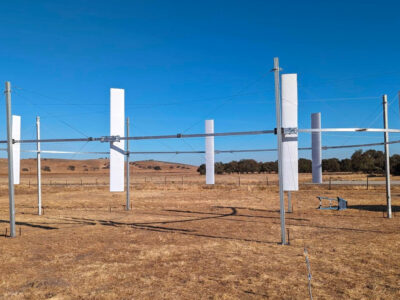


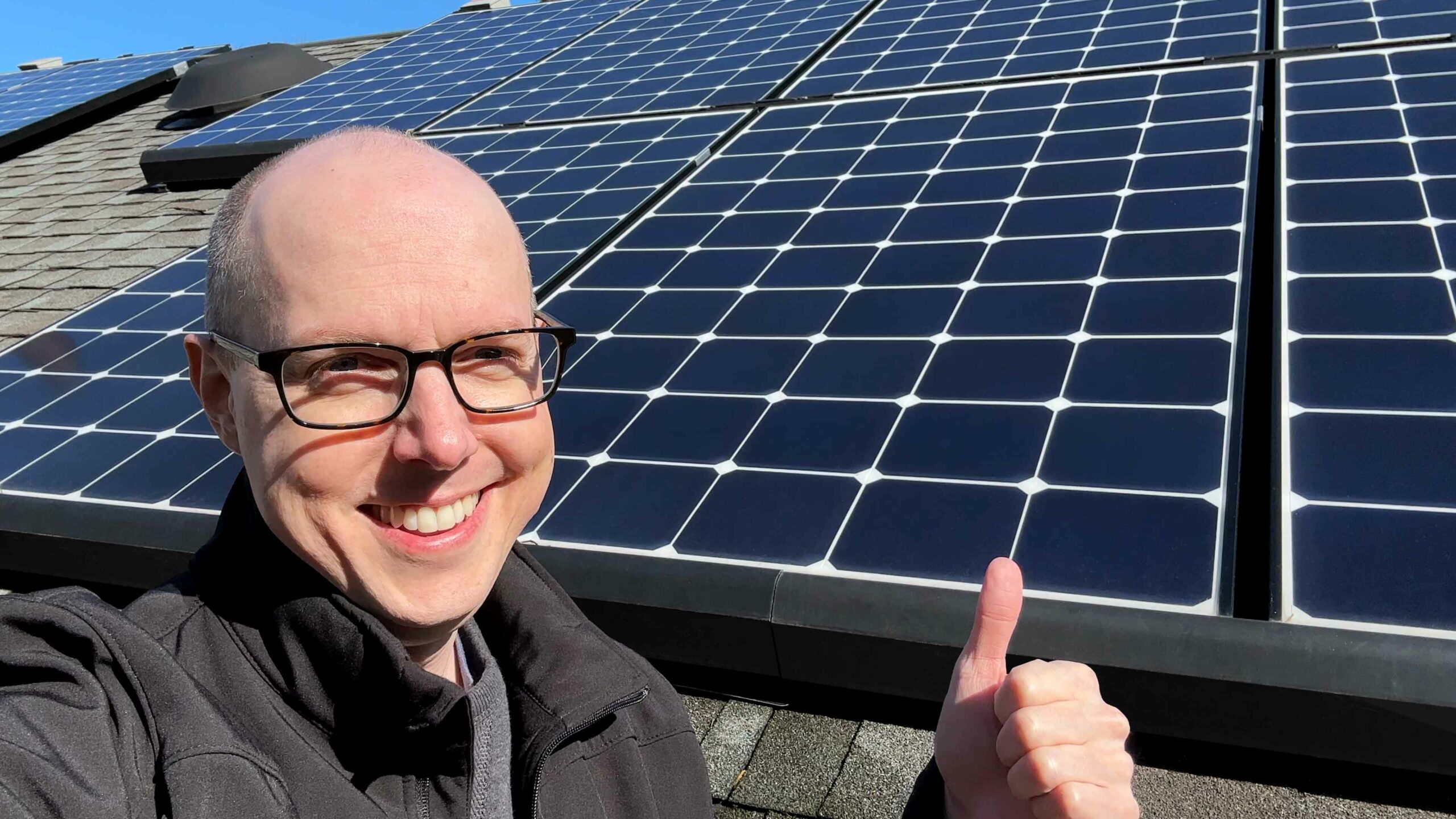
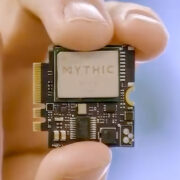
Comments